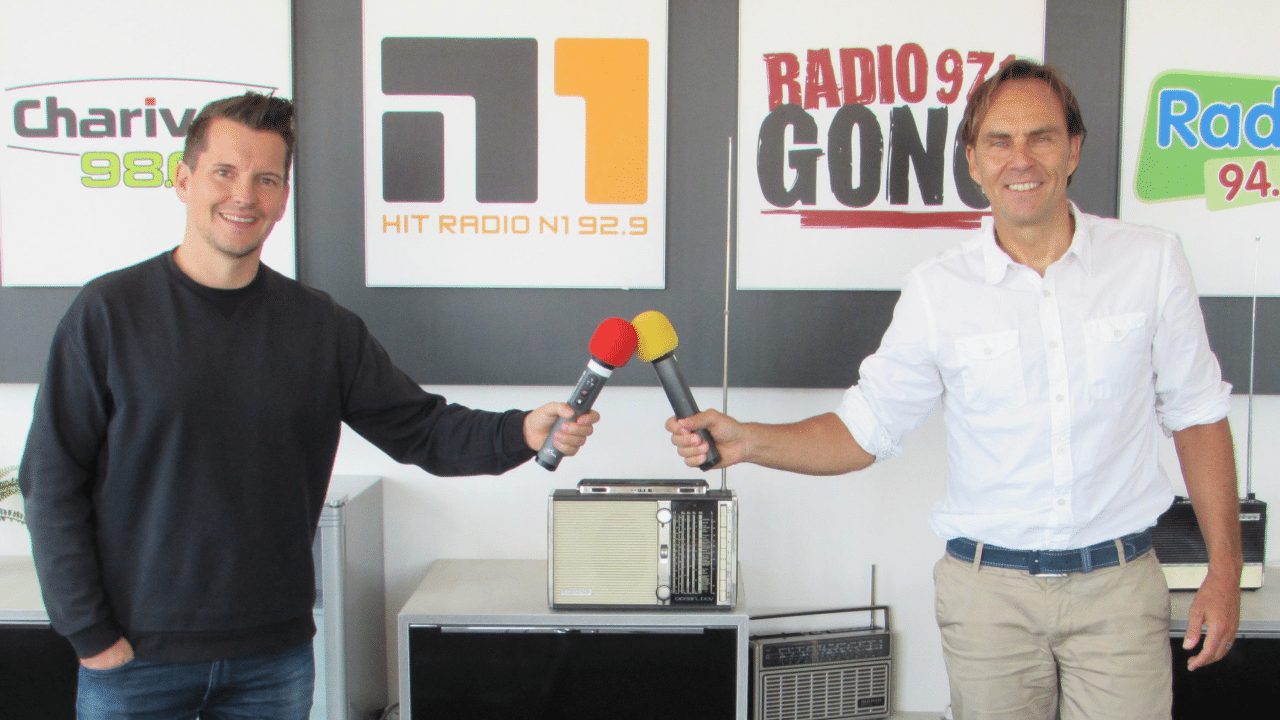FRANKFURT, Germany — Three young men are sitting on a park bench on a Monday afternoon, playing on their cellphones. They make comments like, “Cool, look at this…” A passerby researching radio and audio usage by young target groups in a generational comparison asks, “Hi, excuse me, I have a question: When was the last time you listened to the radio?”
The first young man replies, “This morning in the car with my mother.” The second young man smiles, “Yes, me too — on the way to school in my mother’s car,” and the third agrees, “Yes, in the car this morning, also with my mother.”
Since this short survey was conducted in the Frankfurt metropolitan area, which boasts admirable public transportation infrastructure, those are undoubtedly doting mothers, although their helicopter parenting may raise environmental concerns.
A study shows an apparent deviation of young target groups compared to older ones regarding radio-only usage. The average daily usage time for live radio listening for 14-to 29-year-olds was only half that of all respondents.
Radio usage among 14- to 29-year-olds
So, how do 14- to 29-year-olds use radio, and how has it changed over the last few decades? An analysis of the ARD ZDF-Massenkommunikation study shows an apparent deviation of young target groups compared to older ones regarding radio-only usage in the reporting period 2022–2023. The average daily usage time for live radio listening for 14-to 29-year-olds was only half that of all respondents, at 71 minutes.
Time-shifted radio and podcast listening accounted for only a small share, with an additional 22 minutes. Recent results from research show that, due to higher mobility after COVID and the associated return to the usual everyday routine, there was a decrease in music streaming usage.
So, what are the strategies of radio broadcasters? Björn Röhn, social media manager at Radio NRJ-Deutschland, reports on a competition on TikTok where the winner could win a radio show. The outcomes were exposure for the brand, identifying and potentially recruiting potential young talents and trying out new program content. Another strategy the station employed was launching a dedicated K-Pop channel, thus getting a “foot in the door” for new formats. Special streaming audio offerings can generally be used to test new formats.
Valerie Weber from Audiotainment Südwest recommends looking at radio influencers to see what, where and how things are going. This is a strategy Radio NRJ successfully implemented, offering a platform to prominent actors such as “dieser.johnny” and “Paulomuc.” According to Röhn, both have respectable follower numbers, reaching nearly two million.
It’s impossible to ignore the side effects of attracting new players for advertising. Radio stations can tap into further revenue streams through social media, banner- and text-field advertising on websites, and by creating videos with advertising inserts, pre- and postrolls, and other advertising formats. It’s also important to consider that some target customers do not necessarily have a radio advertising budget but can be won over via social and digital communication channels. Given the virtual omnipotence of tech giants like Google, Amazon, Facebook and Apple, radio marketers need to be creative in where to look for new possible revenue streams.
(Private stations) need to focus on new streaming channels. The youth use their mobile phones everywhere and listen to audio on the move
Back to the young moderators
Funkhaus station manager Alexander Koller once said, “Stations must try out many new talents to let the best ones follow,” but would distance himself from the alleged greater self-confidence. “The pioneers had the greatest courage and inclination to put themselves in the shop window or represent stages — they were simply more extroverted. That’s different today for young talent — sometimes we have to drag the dogs to the hunt.”
Popular public broadcasters Sebastian Pufpaff and Nils Bokelberg are both now aged 47, so they are not that young any longer.Constantin Zöller, a presenter on SWR3, a large public radio station in southwest Germany, fits the youth profile and has a private radio past. Still, there are broader concerns for private stations in Germany.
They, especially, need to focus on new streaming channels. The youth use their mobile phones everywhere and listen to audio on the move. According to media research company Air Supply, towards the end of 2023, Germany had 1,769 radio and online audio channels. So, there are plenty of opportunities for digital radio subbrands to try out new formats in curated streams and win back young people for radio and audio.
Ultimately, the question of reliably measuring new audio formats still arises. How do you determine how young radio presenters connect with the target group in contrast to the traditional criteria used, such as language skills, moderating talent, personality and skillful selection of topics? The available research instruments are, in addition to log file analysis and sentiment analysis, so-called “emotion engines” provided by Cologne research company September and focus group discussions. However, their use faces the hurdles of representation and costs.
From the Radiozentrale (central radio association) in Berlin, it can be heard that the individual productions of the contributions competing in the Radio Award are evaluated understandably and validly with solid measurement criteria, but “we do not honor an Effie Award,” which measures the actual success of a campaign. One point at the Effie is “Cultural relevance — Did the campaign tap into current cultural trends and resonate with the zeitgeist?” And that brings us to the question in this analysis: Is today’s radio still keeping with the times of young target groups? Another question: Do radio award jurors understand what youngsters want and like?
The author has worked in sales and marketing for the German private radio industry since the 1980s. He hosts the video blog #RadioSalesWeekly, which follows developments in the media industry.
More stories about youth audiences
Turkish youth flock to Karnaval

